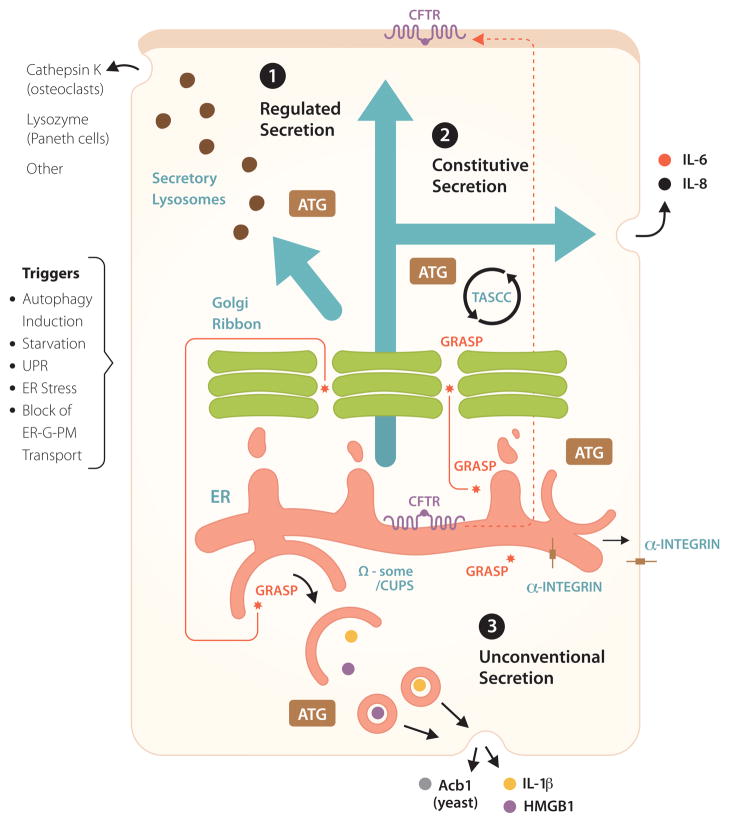Fig. 2.
Non-degradative roles of autophagy in conventional (constitutive and regulated) and unconventional secretion. 1. Regulated secretion: secretory lysosomes, granules and other organelles, partially derived from or affected by post-Golgi vesicles. ATG: symbolizes that Atg factors affect regulated secretion, delivering various biologically active cargo such as indicated. Other: includes non-proteinaceous cargo (e.g. ATP secreted from drug-treated cancer cells), provided that they are competent to undergo autophagy, with inflammatory consequences and clearance of transplanted tumors. 2. Autophagy affects constitutive secretion (e.g. IL-6, IL-8) via a compartment intermixed with autophagic organelles, called TASCC (TOR-autophagy spatial coupling compartment). 3. A subset of unconventional secretion processes depend on autophagy (autophagy-based unconventional secretion; ‘autosecretion’) for secretion of proinflammatory factors IL-1β and HMGB1 in mammalian cells and Acb1 in yeast. GRASP (note in Figure 1 that GRASP is normally localized to the Golgi and affects early stages of autophagy) is required for autophagy-based unconventional secretion (autosecretion). CUPS, a yeast structure implicated in autophagy-based unconventional secretion, may be equivalent to Ω-some in mammalian cells. In addition, autophagy plays a role in unconventional trafficking of the ER-form of CFTR (cystic fibrosis transmembrane conductance regulatory) to the apical aspect of the plasma membrane, bypassing the Golgi and rescuing function of mutant CFTR responsible for cystic fibrosis. GRASP plays a role in autophagy-dependent unconventional trafficking of CFTR and in unconventional trafficking of α-integrin to the basolateral plasma membrane in Drosophila (a role for autophagy has not been established as yet for α-integrin trafficking). Triggers: conditions (the list is not comprehensive) that contribute to induction of unconventional secretion or trafficking.

